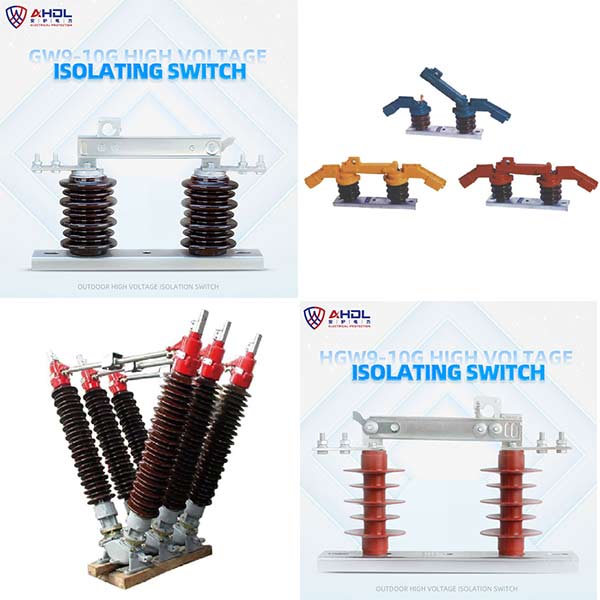In electrical systems, the isolating switch is a crucial component that ensures safe operation and maintenance. Unlike circuit breakers that interrupt current under load, isolating switches provide a visible break in the circuit, creating a safe working environment for electrical personnel. Let’s explore its types, functions, and how to choose the right one.
Isolating switches come in various designs to meet different application needs.
•By installation method: Indoor isolating switches are used in switchgear cabinets and low-voltage distribution rooms, while outdoor versions are designed to withstand harsh weather conditions like rain, dust, and extreme temperatures.
•By voltage level: Low-voltage isolating switches (below 1kV) are common in residential and commercial distribution systems, while high-voltage isolating switches (above 1kV) are essential in power transmission and substation networks.
•By operation mode: Manual isolating switches require hand operation via levers or handles, while motorized versions can be controlled remotely, improving efficiency in large-scale electrical systems.

The primary role of an isolating switch is to disconnect electrical circuits from their power sources safely.
•Safety during maintenance: It creates a visible gap in the circuit, ensuring technicians can work on equipment without risk of electric shock.
•Circuit isolation: It separates different parts of an electrical system, preventing interference between sections and facilitating troubleshooting.
•Emergency shutdown: In case of faults, isolating switches can quickly cut off power flow to prevent equipment damage or accidents.
Isolating switches are widely used in power plants, industrial facilities, commercial buildings, and renewable energy systems like solar farms. They are often paired with circuit breakers to form comprehensive protection systems.
Selecting the appropriate isolating switch depends on several factors.
•Voltage and current rating: Ensure the switch matches the system’s voltage and current to avoid overheating or failure.
•Environmental conditions: Outdoor switches need better insulation and corrosion resistance, while indoor ones focus on compact design.
•Operation requirements: Choose manual or motorized based on accessibility and control needs.
Isolating switches are indispensable in electrical systems, providing safety, isolation, and control. Understanding their types, functions, and selection criteria helps ensure reliable operation. Whether for a small commercial setup or a large power grid, the right isolating switch protects equipment and personnel. Need help selecting an isolating switch for your project? Contact Anhu experts for personalized advice!
GET A QUOTE